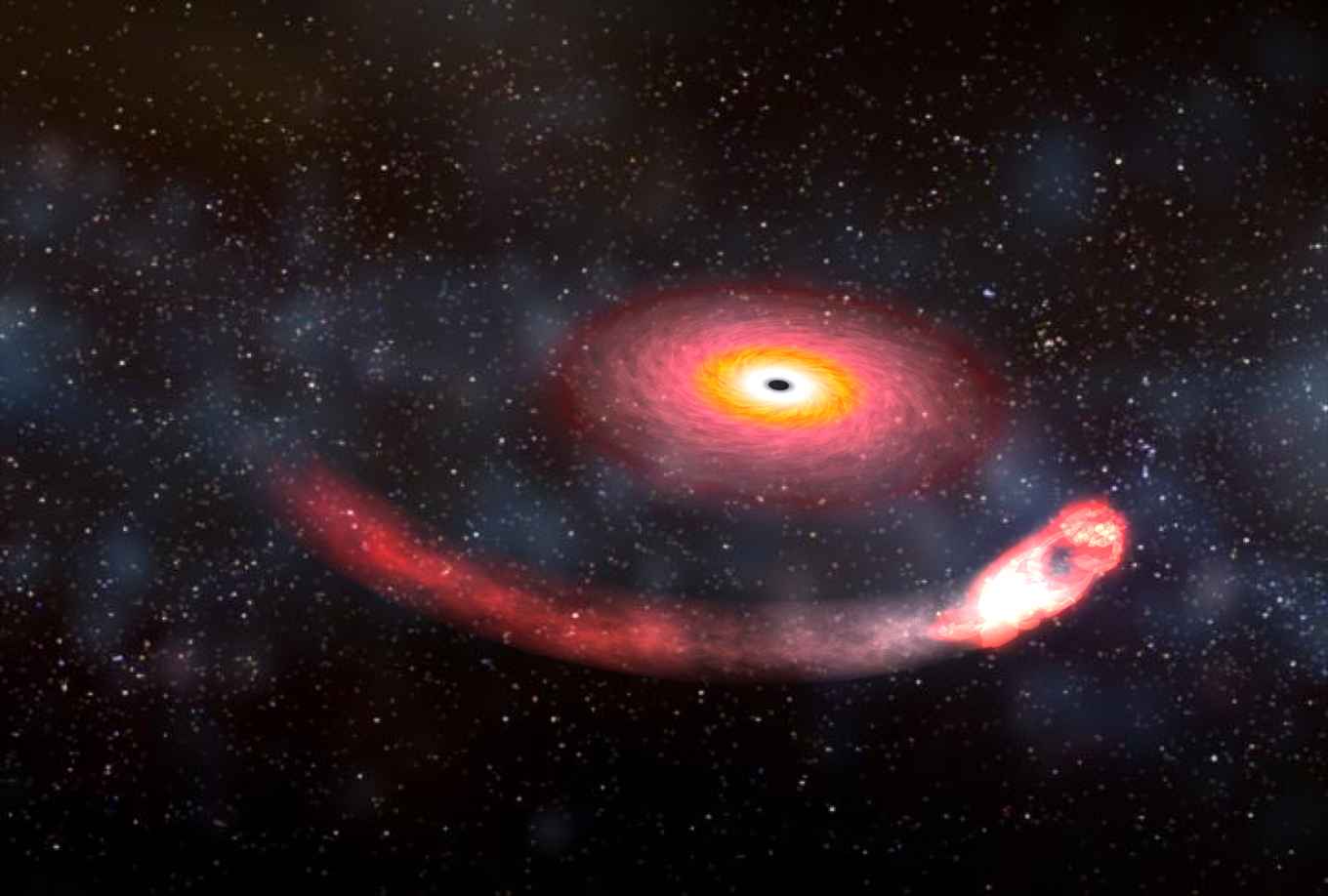Black holes may shed light on dark matter
20 April 2020

Astrophysicists Thomas Edwards, Marco Chianese and Bradley Kavanagh, from the groups of Samaya Nissanke and Christoph Weniger at the GRAPPA center of excellence, have studied the gravitational waves produced by the merger of a neutron star and a black hole. They found that these waves are slightly altered if a certain type of dark matter is present.
Dark matter
Dark matter is an elusive form of matter, thought to account for about a quarter of the Universe’s energy density. It does not interact with any other forces than gravity and can therefore not be ‘seen’. To ascertain the nature of dark matter, one has to independently identify the presence and measure a separate signal due to its interaction with normal particles. This has proven impossible up to now, but the recent detection of gravitational waves emitted by merging black holes have given us a new way to observe the Universe.
The work of Edwards et al. shows that merger events of black holes and neutron stars, combined with radio telescope observations, may show the presence of one of the most well-motivated dark matter candidates: the so-called 'QCD axion'. If such axions exist near the black hole surface when it merges with a neutron star, the gravitational waves emitted will be altered in a subtle but distinct way. This allows for a direct measurement of the axions’ density.
Characteristic signal
The axions will simultaneously be converted into radio waves by the strong magnetic fields of the neutron star. This also yields a characteristic radio wave signal. Together the radio and gravitational wave signals, if detected, would constitute a detection of QCD axion dark matter.
The results have been published this week in Physical Review Letters.
Publication
Unique Multimessenger Signal of QCD Axion Dark Matter, Thomas D. P. Edwards, Marco Chianese, Bradley J. Kavanagh, Samaya M. Nissanke, and Christoph Weniger, Phys. Rev. Lett. 124, 161101 – Published 20 April 2020.